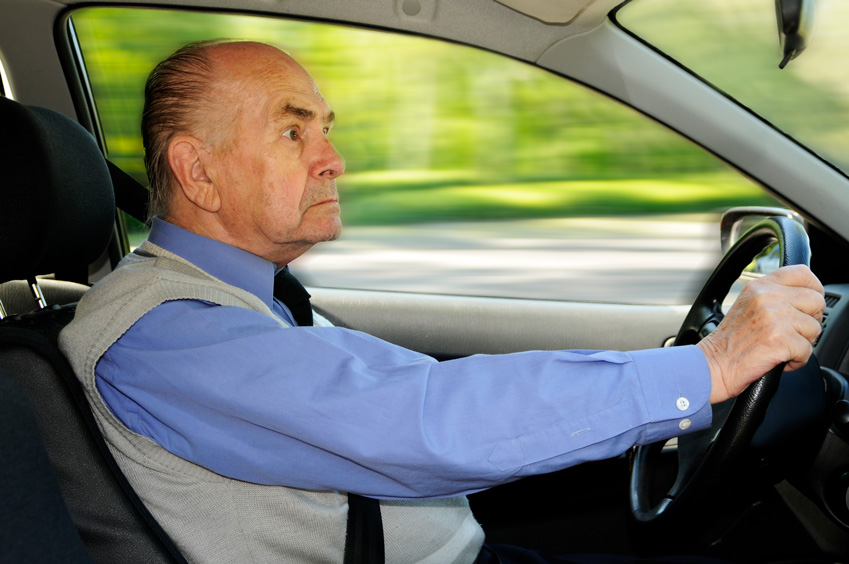Emotions play an important role in road traffic. They influence our thinking, our attention, our decisions and our driving style. They determine whether we take risks or are concerned about our safety. They determine how we behave towards others, whether we are aggressive, angry, considerate or cooperative. They often tell us in which direction and at what speed we want to move. And they can dominate rational and let the irrational happen.
“The heart has its reasons, of which reason knows nothing” (Blaise Pascal, 1623-1662)
There are different expressions for what people feel - feelings, emotions, affects, moods or sensitivities. In science, however, there is no consensus defining and applying these various concepts. And anyone who attentively reads a review article on this subject area in the end does not know whether one should ever use any of these terms in everyday life. Emotion, feeling, affect or mood - what is it that I feel? A working definition must be formulated! This is what experts say: We need a working definition, as long as there is no clear, generally accepted definition of these terms [1]. This article will talk about emotions and moods.
My own working definition for this post is:
An emotion stands for what people feel as opposed to what they think. In contrast to a mood, an emotion is of shorter duration, stronger and related to a specific event or object. An emotion can be actively created by the presence of certain motives, needs, expectations, attitudes, or certain personality traits, e.g. extraversion, timidity, thirst for adventure or impulsivity; but it can also arise passively by reacting to environmental events, such as fear in a threatening traffic situation. Emotions arise in interaction with the environment. They arise when a situation is perceived and evaluated. The intensity of emotions is influenced by certain personality traits.
What positive emotions are associated with driving?
A car arouses aesthetic feelings. It conveys joie de vivre, expresses one's own lifestyle, gives the experience of a sense of community. A car brings feelings of competence, creates feelings of power, strength and superiority and strengthens self-esteem. It brings feelings of security, the feeling of being protected, and it provides a sense of freedom and independence. Driving is a lot of fun. It makes the experience of intense sensory impressions possible. It can give the experience of a strong feeling of happiness (flow) and it helps to experience a dangerous adrenaline kick at high speeds.
What negative emotions are associated with driving?
The experience of stress when physical or mental stress is too great, when the driving task becomes too difficult or emotions such as fear, insecurity or helplessness dominate; the experience of fatigue due to sleep deficit or certain medications; the experience of panic attacks when you inevitably see bad things coming; the experience of fear of loss of control or extreme stress; the experience of anger or frustration in stress situations; the experience of failure, unwanted disorders, impairments, obstacles, threats or unfulfilled desires; the experience of boredom if one feels monotony and irritability; the experience of physical pain when sick or injured; the experience of guilt feelings when causing an accident; the experience of incompetence when a critical situation cannot be controlled; and the experience of shame when such "failure" is observed or negatively commented on by friends.
What emotions and moods do you take to the car?
Many emotions arise before you enter a car and start driving. These emotions are for example joy, happiness, heartache, sadness, depression, disappointment, stress, anger, fear or the sense of security.
What kind of emotions can be triggered when experiencing an accident or when confronted with pictures of an accident?
Shock, compassion, dismay, curiosity, sadness, fear or insecurity are strong emotional reactions that can arise in confrontations with an accident - be it real or through images. In the assumption that such emotions contribute to raising awareness about the dangers in road traffic - and thus to a behavioral change - they are used specifically in road safety communication. So-called "fear appeals" in a campaign confront viewers with threatening messages by presenting accident events with their physical, psychological and social consequences. The central goal of such a campaign is to create a sense of concern and thereby initiate a rethink of previous attitudes and behaviors. Fear appeals promise to bring about a change in behavior towards greater road safety when the behavior is not controlled by reason but primarily by emotions (e.g., having fun when driving fast). As in literature suggested, fear appeals can be successfully used in road safety campaigns if, in addition to the threatening message, appropriate solutions are offered to reduce the risk of accidents, for example by getting “Down with speed !”.
However, if the only target of a campaign is to create fear, then there is a risk that so-called dysfunctional coping strategies are activated, which may result in devaluing a threat. The consequence could be that the campaign is completely ignored or counter-arguments are used to campaign message. Fear appeal-campaigns are usually well communicated by the media. They thus make a significant contribution to discuss a particular traffic safety problem in the public (“agenda setting”) and can thus also raise awareness of this problem [2].
What are the causes for the genesis for emotions?
The causes for the development of emotions in road traffic are rooted on the one hand in the person, on the other hand in the traffic situation. Personality-related causes include certain personality traits such as aggressiveness, thirst for adventure or impulsivity, which provide a person with a relatively stable readiness for more or less strong emotional reactions and who influence the expected consequences of different behavioral alternatives. Expectations play a decisive role in the assessment of a specific traffic situation and the sense of safety accompanying this assessment. This feeling is not always consciously perceived, but nevertheless exists to a certain extent. The sense of safety can be compared to inhaling fresh air. Their existence becomes obvious only when something changes in the air, when it stinks or smells good.
A number of other personal characteristics affect the expectations of road users. These include empathy, the ability to put oneself in another person's situation, the ability to keep burgeoning anger in the fence, and one's own competence to drive or ride (such as controlling attention). But also prejudices and a wrong interpretation of a traffic situation affect the formation of traffic safety relevant expectations and emotions. Thus, the annoyance of a motorist will be greater if the small distance of a driver approaching from behind is interpreted as a deliberate, aggressive action, as if this approach is interpreted as traffic-related, for example due to a high volume of traffic.
The effects of the traffic situation include anonymity among road users, the lack of opportunities to communicate intelligibly and clearly, and congestion of traffic resulting in an increasing number of situations of encounter between road users, which can contribute to the development of anger and stress. The same can be caused by an increasing complexity of road traffic, in that the demands on the road users increase. But also the time of day and the weather can affect the emotional state, as well as music and the presence and reactions of passengers.
What are the effects of emotions?
Emotions influence our thinking, our goals, our attention, our memory, our decisions, our assessments (the situation, other road users, the own driving skills) and our behavior. For example, the feeling of safety exerts an important control function of the driving behavior. If a traffic situation is experienced as safer than it actually is (the subjective safety is greater than the objective safety), it can happen that a person does not drive at a reasonable speed, which in turn increases the risk of accidents. Feeling unsafe and fears contribute to slow the ride, anger initiates to change to an aggressive driving style, and euphoria and strong feelings of happiness tend to lead to a riskier, faster driving style.
Interesting insights into the influence of emotions on cognitive processes come from neuroscience. The center in the brain, in which emotions arise, is called the limbic system. Part of this system is the amygdala, which acts on sensory and attention processes via connections to other areas of the brain [3]. The center in which emotions are controlled is the prefrontal cortex. Only when this center is fully developed (about the beginning of the twenties) an optimal communication with the limbic system is possible, thus providing an important prerequisite for optimal control of emotions [4].
How can emotions be controlled?
Emotions can be controlled by self and external control. Improving self-control requires the ability to avoid anger and stress, the ability to deal adequately with emotions (e.g., anger and stress), and an awareness of the emotional states that are dangerous for driving. These include the sense of safety when it deviates significantly from the objective danger of a situation and an emotion associated with adventurousness. Overcoming anxiety is a task for which those affected should seek psychological support.
External control is achieved through informal and formal social control. The former refers to the attitudes and behaviors of other persons. Friends can help to improve a person's ability to better cope with certain emotions. But they can also do the opposite. As a peer group in the car they can fuel the mood so that the emerging emotions are no longer subject to an effective control. Formal social control takes place through the introduction of laws and rules as well as the monitoring of their compliance. External control can also be achieved by planning traffic and designing the traffic environment. These measures are based on the behavior of the persons.
Emotions in theory and research
The connection between emotions and traffic behavior hast so far been little topic of research [5]. This concerns in particular the questions, which emotions how often occur in road traffic and which explanatory contribution can be attributed to them with the causation of a traffic accident. That emotions are much more difficult to grasp than behaviors, reported behaviors or cognitions (e.g., expectations, probability estimates, ratings) may be one of the reasons that they are rarely the subject of traffic psychology research. To what extent emotions are the actual cause of a traffic accident is hard to prove and will therefore not appear in the official accident statistics.
Emotions also play a rather subordinate role in the theory of traffic psychology. A theoretical approach, in which emotions form a core concept for explaining behavior, has been published by Norwegian psychologist Truls Vaa [6]. In his opinion, an emotion or an emotional state represents an individual target that a motorist aspires to experience. An imbalance between the actual emotional state and the desired emotional state motivates to appropriate behavior (e.g., high speed driving) so that the desired emotional state (e.g., having fun) can be achieved.
In Psychology there are a number of theoretical approaches to the development and impact of emotions on behavior, which have hardly been discussed, let alone applied, in the special discipline of "traffic psychology". Such concepts are "affect heuristics" (Slovic), "somatic markers" (Damasio) or "emotional schemes" (Izard). Common to them is the assumption that emotions through learning processes are associated with particular perceptions, ideas, images or thoughts. In this way, affective impressions of objects or situations arise, which efficiently control decisions, without having to weigh up the advantages and disadvantages of possible alternatives for action [7].
According to Rosenberg and Hovland, there are three attitude components that characterize the relation of a person to an object or a situation - the affective, cognitive and behavioral component [8]. The affective component refers to the emotional reference to an object (e.g. "I love driving at high speed on the highway"), the cognitive component the mental reference (e.g. "You can drive at the same time fast and careful") and the behavioral component the relation to one's own behavior (e.g. "I drive faster than allowed"). In particular, the affective component proved to be a good predictor of the reported driving behavior [7].
Summary Participation in road traffic is always associated with a form of experience, either through a brief strong emotion such as anger, surprise or joy, or through a long-lasting mood that may have been dominant before driving. Depending on the quality, the intensity of the emotions and the situational circumstances, emotions can significantly influence driving and even lead to greater danger. A particularly important emotional state of a road user is the sense of security, which exercises a central control function of the driving behavior. If the sense of security does not coincide with the objective threat to a situation, participation in traffic can be dangerous if, for example, you drive too fast or using a smartphone while driving.
References
[1] Otto, J., Euler, H.A. & Mandl, H. (2000). Begriffsbestimmungen. In J. Otto, H. A. Euler und H. Mandl (Hrsg.), Handbuch Emotionspsychologie (S. 11-18). Weinheim: Beltz, PsychologieVerlagsUnion.
[2] Holte, H. & Pfafferott, I. (2015). Wirkungsmechanismen und Erfolgsfaktoren von Verkehrssicherheitskampagnen. In C. Klimmt, M. Maurer, H. Holte & E. Baumann (Hrsg.), Verkehrssicherheitskommunikation: Beiträge der empirischen Forschung zur strategischen Unfallprävention. Berlin: Springer Verlag.
[3] Phelps, E.A. (2006). Emotion and cognition: Insights from studies of the human amygdala. Annual Review of Psychology, 57, 27-53.
[4] Lenroot, R.K. & Giedd, J.N. (2006). Brain and development in children and adolescents: Insight from anatomical magnetical resonance imaging. Neuroscience & Biobehavioral Reviewes, 30 (6), 718-729.
[5] Mesken, J., Hagenzieker, M.P., Rothengatter T. & De Waard, D. (2007). Frequency, deterninants, and consequences of drivers' emotions: An on-the-road-study using self-reports, (observed) behaviour, and physiology. Transport Research Part F, 10, 458-475.
[6] Vaa, T. (2007). Modelling driver behaviour on basis of emotions and feelings: Intelligent transport systems and behavioural adaptations. In P.C. Cacciabue (Ed.), Modelling driver behaviour in automotive environments (pp. 208-232). London: Springer.
[8] Rosenberg, M.J. & Hovland, C.I. (1960). Cognitive, affective, and behavioral components of attitudes. In C.I. Hovland & M.J. Rosenberg (Eds.), Attitude organization and change: An analysis of consistency among attitude components (pp. 1-14). New Haven, C.T.: Yale University Press.





